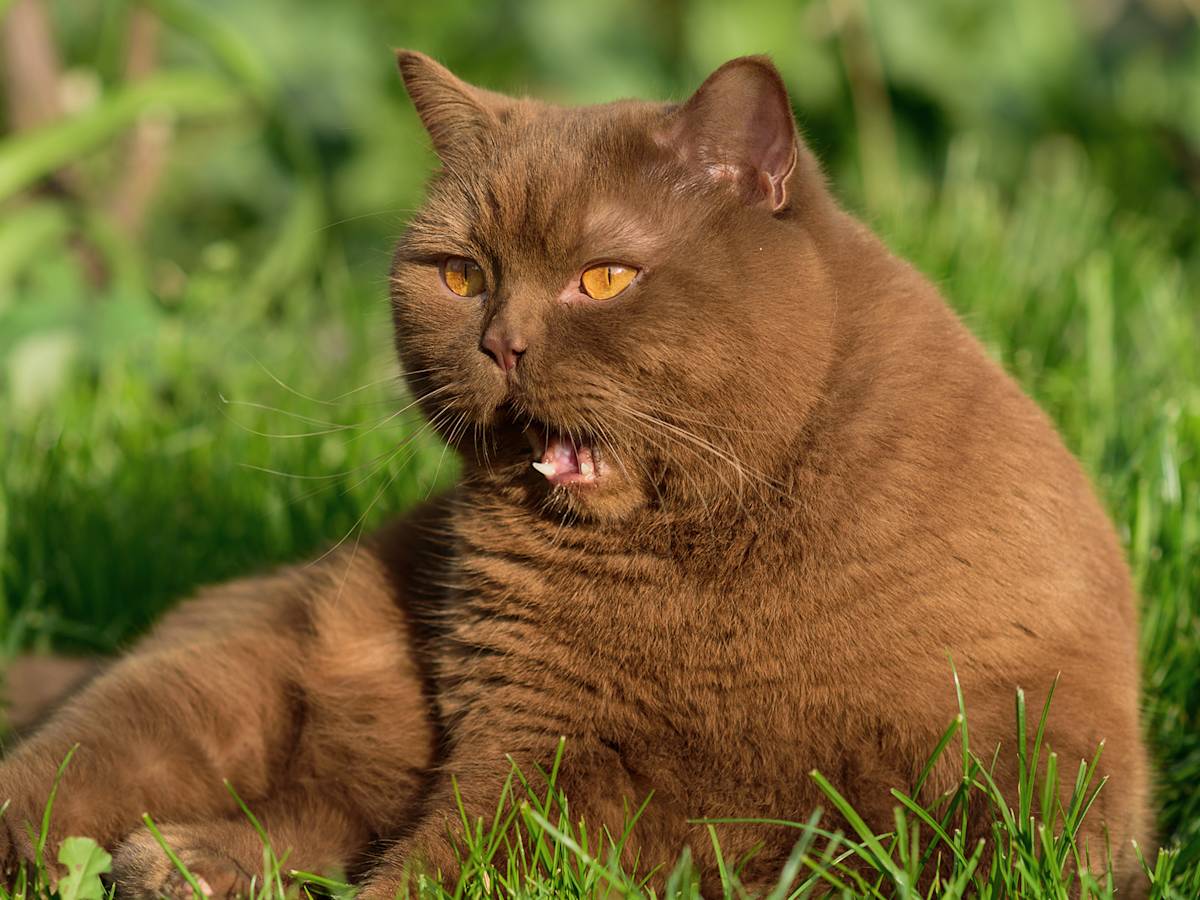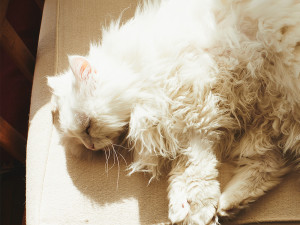Hairballs: A Tangled Web
What to do when your cat hawks one up.
Bezoars, a.k.a. hairballs, were once thought to be the antidote to poison, epilepsy, and the plague — but please don’t go collecting all of your cat’s to fashion into a charm bracelet.
Before a hairball becomes a hairball, it’s a kind of nauseating trifecta of hair, food, and saliva in your cat’s gut — not unlike your snarled, foamy clumps of hair that collect in the shower drain. All cats ingest hair thanks to their methodical grooming routines. Their barbed tongue acts like a Mason Pearson brush to remove loose hair and, naturally, they swallow some of it. Most of that hair ends up in the litter box but sometimes undigested hair mixed with digestive fluids (we’ll spare you the science lesson) gets stuck in your cat’s stomach and metamorphoses into that thing.
Save on the litter with color-changing tech that helps you better care for your cat.
“Hair is not all that digestible — it’s going to either go through or come back up,” says Dr. Amy Stone, DVM, PhD. Hairballs are a fact of life for most cats (and cat owners). Longhaired breeds like Maine Coons cough up clumps of hair twice as often as their shorthaired cousins. If your cat obsessively overgrooms, they may ingest more hair than they can pass. The result is an Emmy-winning performance of retching, gagging, and dry heaving until your cat hawks up a wad of hair on the carpet.
“If hairballs happen once every three or four months throughout your cat’s life, it’s probably not that big of a deal,” Dr. Stone says. “Or, a hairball could be the thing that tells you something is wrong.” Most are harmless, but at times, small clumps of hair can cause big problems like intestinal blockages. If your cat stops eating, seems lethargic, or repeatedly tries to vomit without success, they should see a vet. Dehydration can make it harder for a hairball to pass through your cat’s GI tract so IV fluids are often a quick fix. In more serious cases, surgery may be needed to remove an especially ominous hairball.
How much do you spend on your pet per year?
Stone suggests establishing a regular grooming routine as brushing your cat can help remove excess hair. But if they are becoming an all-too-common occurrence, a hairball diet — yes, it’s a thing — is high in fiber and therefore more digestible. (Fun fact: a study found that cats that eat round kibble more successfully pass hairballs than those that eat triangular kibble.) The next time your cat coughs one up, check your gag reflex and toss it in the trash. It will not — we promise — grant you immortality.





